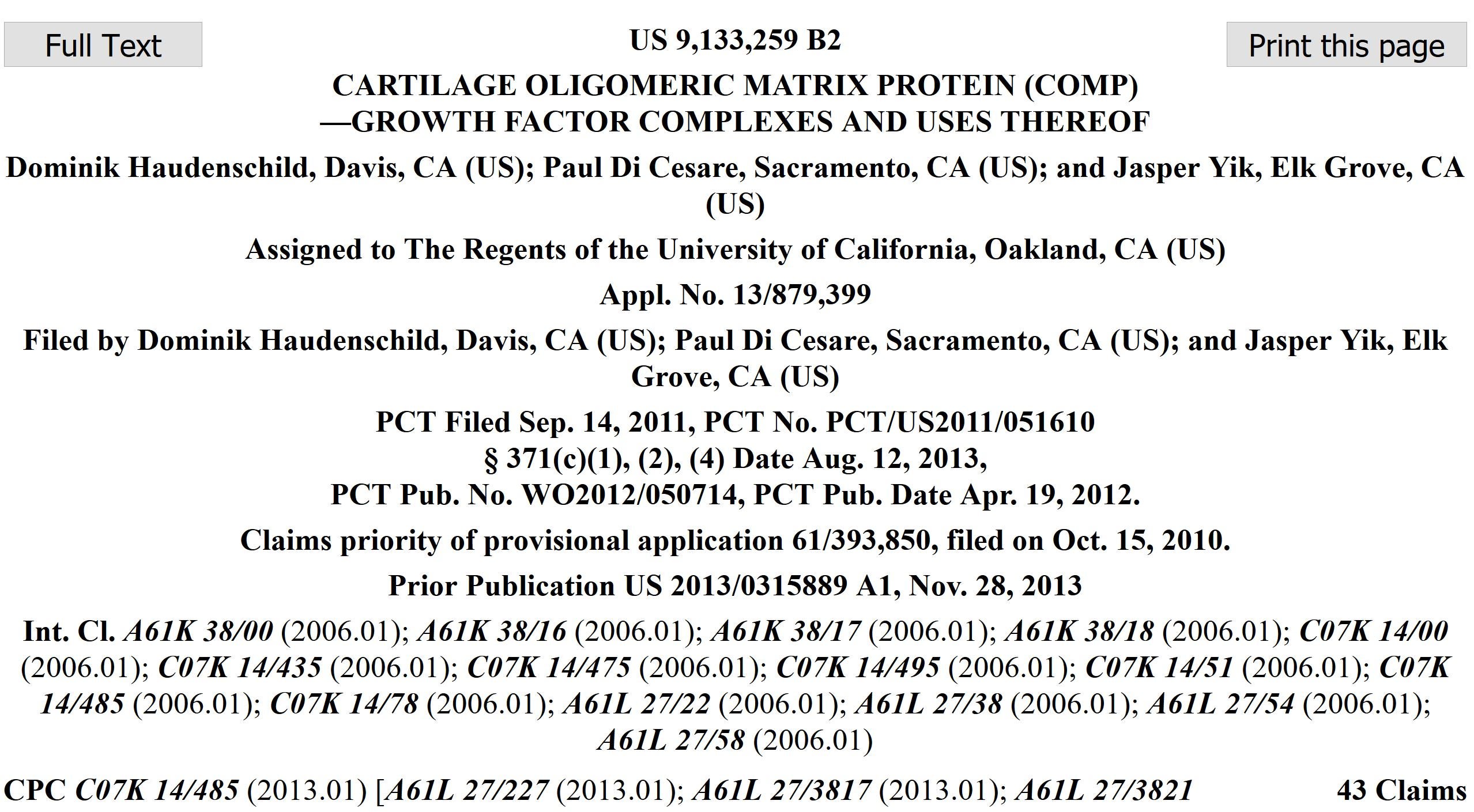Our Lab’s First Patent was Issued

Our lab had its first patent issued, to the Regents of the University of California. A few years ago we discovered that the extracellular matrix protein COMP binds to growth factors of the TGF-beta superfamily. This binding enhances the activity of the growth factors. Scientifically this is exciting! Although it’s been known for 50+ years that BMPs require extracellular matrix for their bone forming activity, we still don’t really know why this is the case. With our discovery, we can start to dissect the BMP-COMP interaction and begin to understand why exactly the growth factors require extracellular matrix for their activity.
We also expect that this will have commercial potential. BMPs are a $2 billion dollar industry, their clinical importance is in helping to form bone. Examples are in spinal fusion surgeries, long bone fracture non-unions, and dental applications. One of the factors limiting clinical BMP use is how inefficient the current BMP formulation is. In fact, physicians often apply 12 to 24 milligrams of BMP in spinal fusion surgeries. Endogenous (naturally occuring) BMP is active in the nanogram range, up to a million times less than what is used clinically! Our patent covers the use of COMP as a carrier or scaffold for the BMP and TGF-beta growth factors, to enhance their activity in bone and cartilage repair.
The full patent is at the USPTO here. Our manuscripts on the topic have been published in the Journal of Biological Chemistry, Bone, Spine, and Matrix Biology. More manuscripts are coming…
The University of California has a generous patent policy, publicly available here. In our case, UC paid for the entire patent application process. If the patent generates revenue, UC will first recover the patent filing costs. After that, 35% of the net royalties and fees are paid to the inventors, and another 15% returns to the campus or laboratory to fund research.
